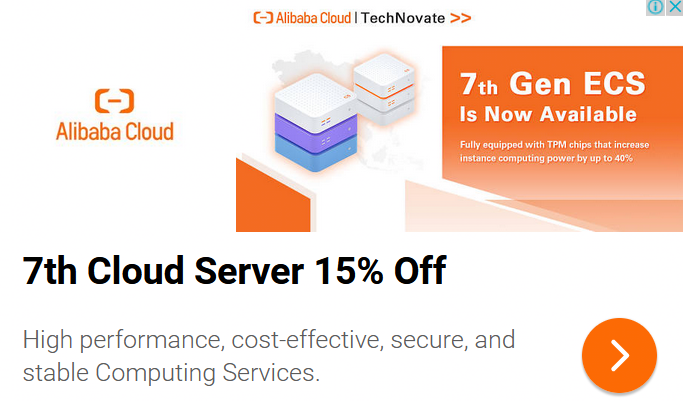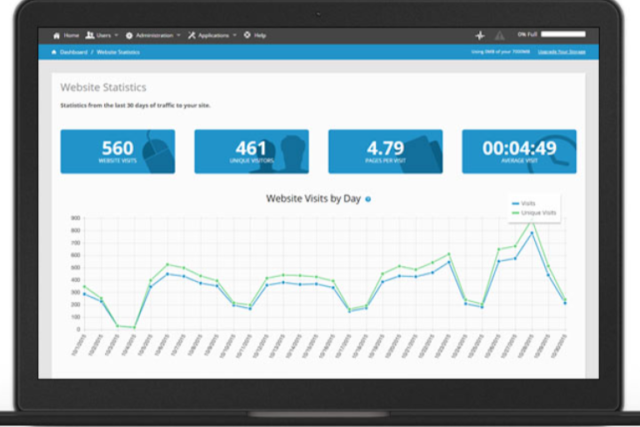On the web, coming across an advertisement from a site already visited is commonplace. This is a proven technique: remarketing (or retargeting). Improve targeting, increase click-through rate, improve conversion rate… so many actions promised by remarketing. The point on this devilishly effective technique.
Internet users who discover your site and convert (contact form sent, purchase etc.) in the wake are (unfortunately) rare. Most of your customers will come back to your site several times during their buying process before making up their minds. And it’s up to marketing to ensure that the user remembers your business during their period of reflection. Google has (once again) thought of everything by setting up remarketing.
If you want to get started in remarketing, the Improving your SEA SEO training will guide you to prepare your sponsored link campaigns on Google and generate qualified visits to your website.
When we talk about remarketing, what are we talking about?
Remarketing (or retargeting) is based on a simple concept. The user came to your site but did not convert (contact, purchase etc.). Later, he surfs the internet and at the turn of his navigation (whether he consults the weather or looks for a translation), he sees a banner inviting him to return to the site. This is the most widely used form of remarketing. It is based on the GDN for “Google Display Network”, the network of thousands of Google partner sites on which you are likely to be displayed.

There is another form of remarketing, the RLSA for “Remarketing Lists for Search Ads”. In this case, it is a question of adapting its Adwords ad (in Google’s search engine) according to the user. Let’s take a concrete example, I am a tour operator and sell trips to Mauritius. I buy the keyword “mauritius travel” on Google Adwords. I decide, for users who have already come to my site only, to increase the bid by 10% (because they are more likely to convert) or I change the message. I can also decide to buy the keyword “Mauritius” only for Internet users who have already come to my site. This keyword is too generic and expensive for me to buy for all Internet users without distinction.

What’s the point?
You have a lot to gain from remarketing:
The target is more qualitative (click-through rates can be up to 10 times better than on conventional display), ideal to maximize its ROI.
(Finally) a lever to bring back Internet users: 26% return against 8% without remarketing estimates Whishpond, an agency specializing in lead acquisition.
You stay in the mind of the user.
Agencies have not been mistaken and are increasingly shifting their display budget to remarketing. The ROI being central nowadays, we might as well capitalize on the Internet users who have the highest conversion rate and whom we already “know” through their behaviors and the pages visited.
Audiences, the key to a good remarketing campaign
Remarketing is based on what Google calls “audiences.” Thanks to Google Analytics, I can define these famous audiences according to a certain behavior of the user. For example, I have a new product for people under the age of 35. I create a new audience on Google Analytics, I check or meet the criteria and then I validate and the audience is created. At its creation, the audience is empty. From that moment on, if a user visits the site and is identified by Google as being that age (via his Gmail account for example), a cookie will be affixed to his browser. The audience is growing and it will be re-kept for a period that I define (maximum 530 days).

In addition to age, it is possible to create an audience in relation to the type of device used (mobile, tablet …), the source of traffic (it came via emailing for example), behavior (number of days since the first session) etc. The most common being the retargeté of people who have seen this or that page. Typically, the user went to see the trips I propose for Mauritius, he will be re-adjusted to this criterion (adapted message).
Implementation on Google Adwords
Our audiences are now created but it is not with Google Analytics that we will publish all this on Google. Audiences created via Google Analytics will end up in the Google Adwords Library and can be added to campaigns. This is when you will choose the banner(s) you want to broadcast to the target, the daily budget, the geographical settings, the distribution schedule etc. as for any Adwords campaign.
Adwords will also allow to have the details of the “locations” that is to say the sites on which our ad is published. As for the statistics, they are numerous: bounce rate (obviously), statistics by day, by hour, by banner, achievement of objectives etc. A remarketing campaign is optimized, tested and can become more complex if the need arises (for example: a different message during the day and in the evening).
The importance of a good remarketing strategy
Remarketing has sometimes been used a little wildly: a visit to a site earned us systematic banners for a significant period of time. Or worse, we were offered a product that we had just bought! At a time when ROI is increasingly central, advertisers are acting more meticulously. People who have converted are excluded from the hearings, so they will not be retargeted. You can also set the “capping” that is to say the number of visible impressions per day / week so as not to overload the user. As said above, the advertiser is the sole master of the lifetime of the cookie, if I only want to re-register people for 10 days, it is quite possible.
More generally, it is advisable to set up real strategies in terms of remarketing. It would be a shame to re-signature a person who has consulted ski trips with a message inviting him to go and enjoy the beach in the Maldives. As with any campaign, it is by not overloading the target, by regularly changing the message to which it is subject and by giving it what it seeks that we obtain the best results. The best advertisers go further and also seek to generate additional purchases: we will seek to sell video games to someone who has just bought a game console for example.




MOST COMMENTED
DreamHost E-commerce Hosting: Building Online Stores
Is it better to dropship with Amazon FBA or with Shopify?
10 reasons to start your blog today!
How to create a travel blog?
5 ways to make money with your blog
5 newsletter ideas to boost your Christmas sales
How to find the best niches in dropshipping?